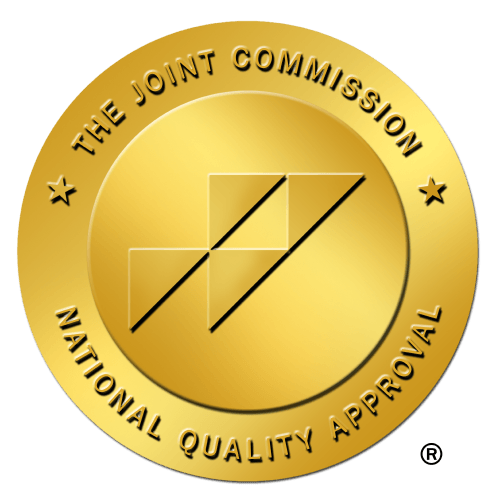Hydrocodone Vs. Oxycodone: Facts & Differences Between These Synthetic Opioids


Hydrocodone vs Oxycodone: What's the difference? Find the difference between these opioid painkillers in our blog. Opioid addiction is treatable.
Hydrocodone vs oxycodone: What’s the difference?
Both hydrocodone and oxycodone are prescription drugs that are administered to people to help relieve pain. They are commonly offered as short-term medication to patients with moderate to severe pain.
However, these prescription pain medications are used for long-term or chronic pain and can sometimes be prescribed for treating cancer and arthritis. They can be taken alone and in combination, as directed by the doctor. Both drugs alter the pain signals sent by the central nervous system to the brain.
As oxycodone and hydrocodone are used for similar purposes and contain opioids, people are often curious about whether they are the same. In addition, both drugs have the potential to become addictive, giving the layman more reason to consider them synonymous.
But there are many differences between the two. It can be beneficial to be aware of these distinctions, especially if you have been observing a case of prescription drug abuse developing around you.
Stats About Opioids
Opioid overdose contributes to almost 50,000 death every year, and opioids are commonly an active factor in 7/10 drug overdose-related deaths - NCDAS.
Hydrocodone vs Oxycodone: Synthetic Opioids
Synthetic opioids are formulated in labs to provide the effects of opioids. This is done by imitating the chemical structure of natural opioids extracted from opium poppies. Though they possess the same chemical buildup as any natural opioid, they are synthetically made in pharmaceutical laboratories.
Oxycodone and hydrocodone are both synthetic opioids. The only difference in the chemical makeup of the two is that Hydrocodone has one oxygen atom less than oxycodone.
What Is Oxycodone?
Oxycodone is a synthetic opioid painkiller used to treat severe pain. It is sold under well-known brand names:
Oxycontin
Reltebon
Oxypro
Zomestine
Longtec
It can also be used to treat chronic pain that doesn't respond to other pain relievers like aspirin, ibuprofen, paracetamol, and more. Oxycodone is an opioid pain reliever that is unavailable over the counter and can only be obtained with a doctor's prescription.
This is because it can potentially affect the central nervous system directly, and the body can become dependent on it if misused.
Who Should Take Oxycodone?
Oxycodone is not a medication that should be taken on a whenever-needed basis. It is taken round the clock with specific timings and doses to take care of, and it should not be stopped until the doctor says so.
How Strong Is Oxycodone?
Oxycodone medications come in capsules, tablets and even an oral solution. These all have varying strengths:
Oxycodone Capsules: 5mg strength
Oxycodone Tablets: These come in 5 mg, 10 mg, 15 mg, 20 mg, and 30 mg strengths.
Oxycodone Oral Solution: This comes in a 5 mg / 5 ml strength. There’s also an extremely strong concentrated version: 100 mg / 5 ml strength.
What Is Hydrocodone?
Hydrocodone is also a pain reliever commonly used to treat patients with tolerance to opioids, and other medications are not helping. It is given to patients who require a painkiller round the clock for a long duration.
Hydrocodone is only available with a prescription from the doctor as it is a controlled substance and can be misused.
Its brand names include:
Norco
Lorcet
Vicodin
Vicodin ES
Who Should Take Hydrocodone?
Hydrocodone is a drug that can be used to treat someone who is in pain because of a chronic condition, surgery, or injury. However, this medication should be used only when prescribed by the doctor, as it is one of the most abused prescription painkillers and is easy to abuse.
How Strong Is Hydrocodone?
Most often, hydrocodone is combined with the over-the-counter painkiller acetaminophen. This mixture is available in a wide variety of strengths:
2.5 mg hydrocodone with 500 mg acetaminophen
5 mg hydrocodone with 500 mg of acetaminophen
7.5 mg hydrocodone with 325 mg, 500 mg, 650 mg, and 750 mg of acetaminophen
10 mg hydrocodone with 325 mg, 500 mg, 650 mg, 660 mg, 750 mg of acetaminophen
Hydrocodone vs Oxycodone: How They’re Similar
A warning has been provided by the FDA stating that consuming hydrocodone and oxycodone in combination with acetaminophen can increase the risks of overdose and liver damage.
These two highly addictive substances share a few other similarities:
Hydrocodone and oxycodone are both generic names for opioids commonly prescribed for pain relief.
Both of the drugs are classified as Schedule II semi-synthetic opioids
They are both prescribed to treat moderate to severe pain.
Hydrocodone and oxycodone have a very similar chemical structure
They both bind to opioid receptors in the brain to interrupt pain signals traveling to the brain
Both prescription drugs have been found to slow down body functions such as breathing and digestion
Oxycodone and hydrocodone are both very addictive and should only be taken as recommended and prescribed by a medical professional
When comparing the two drugs, it is important to remember that while they are effective for short-term pain relief, long-term use can result in greater drug tolerance. This threshold of the user increases with continuous consumption of the drugs, and with time the user starts to seek higher doses to achieve the same level of relief or pleasure.
Are You Struggling with Mental Health or Addiction?
We Can Help. Call Us Now!
CALL: 877-839-1772
Hydrocodone vs Oxycodone: Comparing Hydrocodone & Oxycodone
There are many similarities and a few differences between Hydrocodone and Oxycodone. Therefore, here is a comparison between the drugs based on different essential factors contributing to their effects and use.
Forms
Both hydrocodone and oxycodone can be taken by themselves or even in combination with other painkillers such as aspirin, acetaminophen, or ibuprofen. They are both available in tablets, capsules, and liquids. Extended-release versions of both are also available, releasing the drug slowly into the body to offer its effects for longer.
However, this extended version of Oxycodone or Hydrocodone is not recommended for short-term use. Oxycodone can be purchased in six different forms:
Tablet form
Extended-release tablet
Capsule form
Extended-release capsule
Liquid solution
Concentrated liquid solution
Hydrocodone, meanwhile, is available in two forms as extended-release tablets or capsules.
Doses
Working out a dose is important before starting either oxycodone or hydrocodone medication. Both prescription drugs come in different strengths; your doctor will tell you which potency and frequency you should take for your pain. They will decide the dose you require depending on:
How old you are
What is causing your pain
The severity of your pain
How long will you need to take the drug– long-term or short-term
Medical history & any other drugs you may be taking
If you have any other conditions, especially related to the heart, liver, lungs, or kidneys
If you are at risk of developing an addiction or abusing the drugs
How Often They’re Taken
Oxycodone is usually prescribed every 4-6 hours to help manage moderate to severe pain. This goes for combination medicines as well – if oxycodone contains acetaminophen, ibuprofen, or aspirin as well. It can be adjusted as per the severity of pain and requirement. Extended-release versions should not be taken more than twice a day.
On the other hand, extended-release hydrocodone capsules are safe for consumption once every 12 hours. This medication is typically prescribed to be taken once a day.
How They’re Classified
Before 2014, both hydrocodone and oxycodone were classed under separate drug schedules. Drug schedules are used to determine the potential abuse of drugs. It also indicated the accepted medical uses of the drug.
Both oxycodone and hydrocodone are now classified as Schedule II drugs. Drugs in this schedule have an extremely high potential for misuse.
Hydrocodone vs Oxycodone: Common Side Effects
Opioid abuse is bound to have negative effects on the user, such as a disturbed heart rate and slow mental functions. Opioid prescription medications like oxycodone and hydrocodone are highly effective in relieving pain and creating a feeling of relaxation and euphoria.
However, one of the worse impacts of the drugs is that this feeling of euphoria and calmness can trigger an addiction. Prescription opioids are usually prescribed for the short term to help with different types of severe pain caused by post-surgical pains and various injuries. However, long-term use can trigger abuse and addiction.
Some common side effects of both drugs include:
Slowed breathing
Nausea
Dry mouth
Hives
Extreme drowsiness
Stomach pain
Heartbeat irregularities
Mental confusion
Constipation
Swelling of the face, including lips and tongue
Distinct Side Effects of Oxycodone & Hydrocodone
As they are both depressants, oxycodone and hydrocodone tend to have similar side effects mostly. However, they also have some distinct side effects, with hydrocodone having more.
Common Side Effects of Oxycodone
Headache
Flushing
Dryness of the mouth
Mood swings
Stomach cramps and aches
Feeling exhausted and tired
Common Side Effects of Hydrocodone:
Stomach cramps and aches
Dryness of the mouth
Feeling tired most of the time
Struggling with sleep
Headaches
Feeling tightness in the muscles
Backaches
Ringing in ears
Shaking uncontrollably
Frequent urination that can be painful
Swollen feet, ankles & legs
Are You Struggling with Mental Health or Addiction?
We Can Help. Call Us Now!
CALL: 877-839-1772
Hydrocodone vs Oxycodone: Side Effects
Hydrocodone and oxycodone are high-risk drugs, so they are classified as Schedule II drugs. The biggest risk both drugs come with is the risk of developing an addiction. It is very easy to get addicted to medication that helps you feel better, especially if it gives a sense of calmness, sedation, and euphoria.
In addition, they both carry a warning about their habit-forming risks. It is important to discuss all of these issues with your healthcare provider before starting the medication, as an addiction can be life-changing – and not in a good way!
Can I Get Addicted to Oxycodone or Hydrocodone?
When someone has been taking the drugs for some time, they develop a tolerance to it and need higher doses to feel the same effects as the first dose. Unfortunately, this is often a good enough temptation for users to start taking the drug more frequently, resulting in abuse.
Consumption of either oxycodone or hydrocodone in higher or more frequent doses than the doctor prescribes can result in an overdose. This can be fatal if not managed properly or dealt with in time.
Symptoms of oxycodone and hydrocodone overdose:
Difficulty breathing – breathing may slow down, become shallow or complex, and may gradually stop altogether.
Feeling extremely sleepy until the user is unable to respond or even wake up
Heart rate might start slowing down, leading to a heart attack
Weakness of the muscles
Cold and clammy skin
Other Risks Associated with Hydrocodone & Oxycodone
There are additional risks with hydrocodone and oxycodone:
Are You Struggling with Mental Health or Addiction?
We Can Help. Call Us Now!
CALL: 877-839-1772
Hydrocodone vs Oxycodone: Drug Interactions
When taking hydrocodone or oxycodone, you must inform your healthcare provider about all the medications and supplements you are currently taking. This is because opioids such as hydrocodone and oxycodone interact with several other drugs, leading to serious side effects. Opioids and specific drugs that depress the central nervous system are usually the main types.
Here are some common drugs that can interact with oxycodone and hydrocodone to cause a reaction:
Cough and cold medications
Saint-John's-wort
Monoamine oxidase inhibitors (MAOIs)
Selective serotonin-reuptake inhibitors (SSRIs)
Gabapentin
Muscle relaxants
Sedatives such as benzodiazepines
Tryptophan
Anti-seizure medications
Insomnia medications
Alcohol
Kava
Other opioids
Hydrocodone vs Oxycodone: Withdrawal Symptoms
When an opioid prescription medication such as hydrocodone or oxycodone has been consumed for a while, your body may likely have become dependent on them. This means that your body and mind feel like they cannot function without the drug. As they try to rebalance themselves, a person experiences what is known as withdrawal symptoms.
These symptoms include:
Flu-like symptoms: fever, coughing, or runny nose
Mood swings
Anxiety or depression
Restlessness and fatigue
Feeling chilly or hot
Insomnia
Abdominal cramps
Vomiting/ nausea
Increased blood pressure
Diarrhea or upset stomach
Tachycardia
Inability to concentrate
Suicidal thoughts and tendencies
It is a good idea to always talk with your healthcare provider about stopping Oxycodone or Hydrocodone safely. They will often recommend a plan to taper the medication off slowly. They may even suggest a good detox plan for you or help you enroll in a good rehab facility if the case is severe.
Are You Struggling with Mental Health or Addiction?
We Can Help. Call Us Now!
CALL: 877-839-1772
Hydrocodone and Oxycodone Can Be Addictive. The Forge Recovery Center Effectively Treats Opioid Addiction
Hydrocodone vs Oxycodone: Both of these can be a losing match for a person. Addictive and easy to overdose on, these opioid drugs can shatter a person’s life.
Fortunately, opioid addiction is treatable. At The Forge Recovery Center, we use proven, evidence-based techniques to free a person from the effects of opioid abuse. With us, you’ll be able to detox safely from these drugs and explore a new, healthy life without opioid addiction and the threat of overdose.
If you’d like to learn more about our dedicated opioid addiction program, reach out to The Forge Recovery Center now.
Are You Struggling with Mental Health or Addiction?
We Can Help. Call Us Now!
CALL: 877-839-1772




